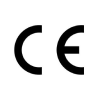
The Occupational Safety and Health Act (OSH Act) sets safety standards and other compliance requirements for protective equipment. In this guide, we list several product categories covered by the Occupational Safety and Health Act (OSH Act) – including gloves, helmets, safety goggles, and much more.
Content Overview

FREE CONSULTATION CALL (US, EU & UK)
- Request a free 30-minute call with Ivan Malloci to learn how we can help you with:
- Find product requirements
- Certification and labeling
- Lab testing
What is the Occupational Safety and Health Act?
The OSH Act aims at providing safe and healthy workplaces for employees in both industrial and non-industrial environments. The act covers general workplace safety requirements such as the following:
- Medical and first aid
- Exit routes and emergency planning
- Powered platforms, man lifts, and vehicle-mounted work platforms
- Occupational health and environmental control
- Hazardous materials
- Fire protection
Also, it sets out the safety requirements for workers’ personal protective equipment (PPE), in 29 CFR 1910 Subpart I. Specifically, it provides requirements for the following classes of PPE:
- Eyes and face protective equipment
- Respiratory protective equipment
- Head protective equipment
- Foot protective equipment
- Hands protective equipment
- Electrical protective equipment
Eye and Face Protection Equipment
While working in an industrial environment, eye and face protective equipment might be essential to protect the workers from flying particles such as dust and chemical liquid. As such, the OSH Act requires that protective eye and face protection devices must comply with the standard ANSI/ISEA Z87.1.
This standard sets out the technical requirements for different work operations such as welding and torch brazing, also the equipment characteristics such as filter lens thickness and minimum protective shade.
ANSI Standard
ANSI/ISEA Z87.1 – Occupational and Educational Personal Eye and Face Protection Devices
Examples
- Face shields
- Safety glasses
- Chemical splash goggles
- Impact goggles
Respiratory Protection Equipment
Respiratory equipment can protect workers from harmful dust, fog, smoke, or other atmospheric contamination. In medical situations, it can also be used to protect from viruses and bacteria. The standard 1910.134 of the OSH Act requires employers to establish a respiratory protection program for their specific workplace.
The program should include the following information:
- Air quality testing procedures
- Proper use of respirators
- Respirator effectiveness
- Respiratory hazards training
The OSH Act states that employers should select NIOSH-certified respirators, as NIOSH sets out the minimum filter efficiency requirements as below:
a. N95: must filter at least 95% of particles
b. N99: must filter at least 99% of particles
c. N100: must filter at least 99.97% of particles
The NIOSH provides detailed requirements for respirators on 42 CFR Part 84, including the following:
- Filter efficiency level
- Airflow resistance
- Filter identification
- Labeling requirement
NIOSH Standard
NIOSH 42 CFR Part 84 – Approval Of Respiratory Protective Devices
Examples
- N95 respirators
- Full-face respirators
- Dust mask respirators
- Air-supplying respirators
Head Protection Equipment
Safety helmets and other head protection equipment are essential for working environments such as construction, forestry, and the mining industry. Standard 1910.135 sets out the technical requirement for head protection requirements, including the following:
- Lateral impact
- Top-only impact
- Helmet classification
- Impact attenuation test
- Penetration resistance test
Specifically, the standard requires that head protection equipment must comply with ANSI Z89.1 – American National Standard for Industrial Head Protection.
ANSI Standard
ANSI Z89.1 – American National Standard for Industrial Head Protection
Examples
- Bump caps
- Safety helmets for general use
- High-performance safety helmets
- Electrician helmets
Foot Protection Equipment
Protective footwear can help workers to prevent workplace hazards such as electric shocks and rolling objects. Importers and manufacturers should evaluate the performance of the equipment, and comply with the standard 1910.136 under the OSH Act.
Standard 1910.136 sets out the technical requirements for foot protection including:
- Impact resistance
- Compression resistance
- Conductive properties
- Puncture resistance
Specifically, standard 1910.136 requires that foot protection equipment must comply with the ASTM or ANSI standards as below.
ANSI/ASTM Standards
a. ASTM F-2412 – Standard Test Methods for Foot Protection
b. ASTM F-2413 – Standard Specification for Performance Requirements for Protective Footwear
c. ANSI Z41- American National Standard for Personal Protection -Protective Footwear
Examples
- Safety-toed shoes
- Rain boots
- Chainsaw Chaps
- Knee pads
- Ice cleats
Hand Protection Equipment
Standard 1910.138 of the OSH Act requires that hand protection equipment must be effective to protect workers from hazards such as laceration, thermal burns, and other potential hazards.
Even though the OSH Act does not provide specific standards for hand protection equipment, it is still the importers’ and manufacturers’ responsibility to ensure product safety.
For example, importers and manufacturers can refer to existing standards to verify product safety. Below we list some voluntary standard examples.
ANSI Standards
a. ANSI/ISEA 138 – Performance and Classification for Impact-Resistant Gloves
b. ANSI/ISEA 105 – Hand Protection Classification
Examples
- Puncture-resistance gloves
- Metal mesh gloves
- Coated fabric gloves
- Chemical and liquid-resistant gloves
Electrical Protective Equipment
Standard 1910.137 of the OSH Act covers the safety requirements for electrical protective equipment such as rubber gloves and rubber insulating sleeves.
Standard 1910.137 set out the requirements below:
- AC Proof-test requirements
- DC Proof-test requirements
- Glove tests-water level
- Rubber insulating voltage requirements
- Rubber insulating equipment test intervals
Specifically, it requires non-ozone-resistant equipment to be marked as Type I; and ozone-resistant equipment to be marked as type II, as they have different testing requirements for type I and type II equipment.
ASTM Standards
a. ASTM F712-06 – Standard Test Methods and Specifications for Electrically Insulating Plastic Guard Equipment for Protection of Workers
b. ASTM D120-09 – Standard Specification for Rubber Insulating Gloves
c. ASTM D1051-08 – Standard Specification for Rubber Insulating Sleeves
d. ASTM F479-06 – Standard Specification for In-Service Care of Insulating Blankets
Examples
- Insulating rubber gloves
- Insulating rubber blankets
- Insulating rubber sleeves



















